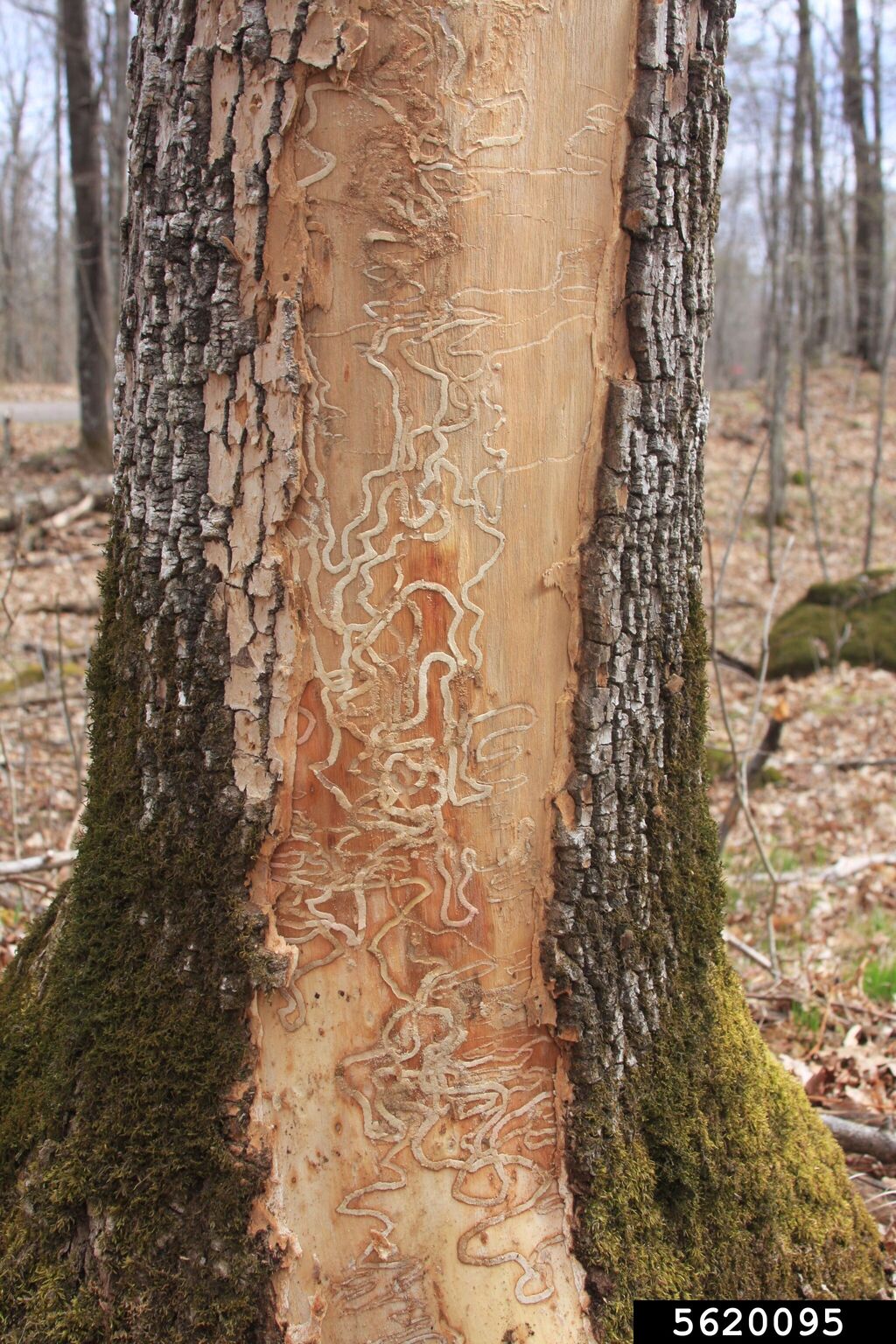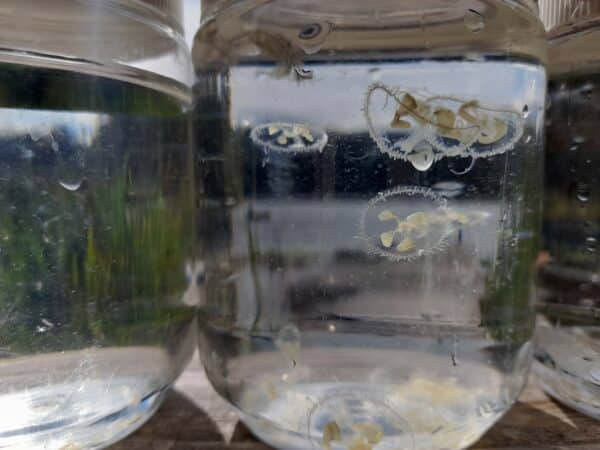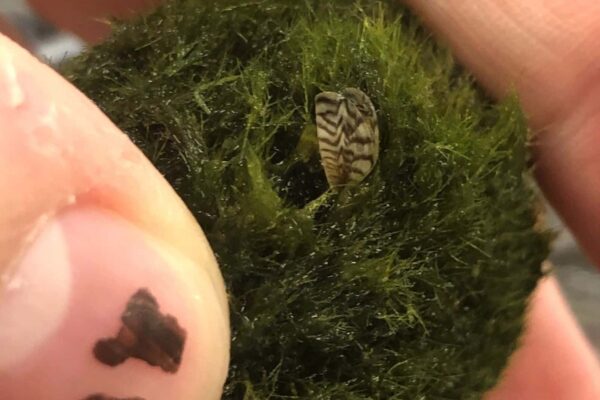By Lisa Houle | May 3, 2024
May is Invasive Species Action Month in B.C. The month has just begun, and a new invasive species has already been detected in Vancouver. ISCBC is pleading with campers and nature lovers heading into the great outdoors in the weeks leading up to the May long weekend: do not move firewood.
The presence of Emerald ash borer (Agrilus planipennis), an invasive wood-boring beetle, has been confirmed in Vancouver, B.C. by the Canadian Food Inspection Agency (CFIA). This is the first appearance of this invasive species in B.C. Effective immediately, CFIA has restricted the movement of all ash material and other firewood around the affected location in Vancouver and property owners have been notified.
Emerald ash borer is small, measuring only 8.5-14 millimetres in length. A key ID feature is its metallic emerald-green colour, and unique narrow, bullet-shaped body. A telltale sign in tree bark is the D-shaped exit holes emerging adults leave behind. The Emerald ash borer destroys ash trees but it is not known to attack soft wood lumber species of trees such as pine and spruce. CFIA regulates this pest to protect Canada’s forests, municipal trees, and nurseries.

Emerald ash borer was likely first introduced to North America by hitching a ride within shipping pallets from overseas. It is also unknowingly moved in firewood.
“One of the easiest things we can all do to prevent the spread of invasive species like Emerald ash borer and Spongy moth, is to not move firewood as this is how they like to hitch a ride to new locations. That’s where these species love to hide,” said Gail Wallin, ISCBC’s Executive Director. “We always urge folks to practice Buy Local Burn Local. It’s an easy way to make a big difference.”
Restricting the movement of firewood through the practice of Buy Local Burn Local is a very effective way to reduce the spread of invasive insects. Buy firewood at or near the destination where you’ll be burning it to ensure you are not introducing pests or diseases to the area. If you have firewood left over from your stay, leave it. Always avoid transporting firewood long distances.
If you think you may have spotted Emerald ash borer, submit a report online to the Canadian Food Inspection Agency.
Lisa is a Communications and Outreach Coordinator at ISCBC. She values a diverse environment and connecting with others about environmental protection. In her spare time Lisa enjoys spending time at the ocean and beach combing for sea glass. You can reach Lisa at lhoule@bcinvasives.ca
Share


















